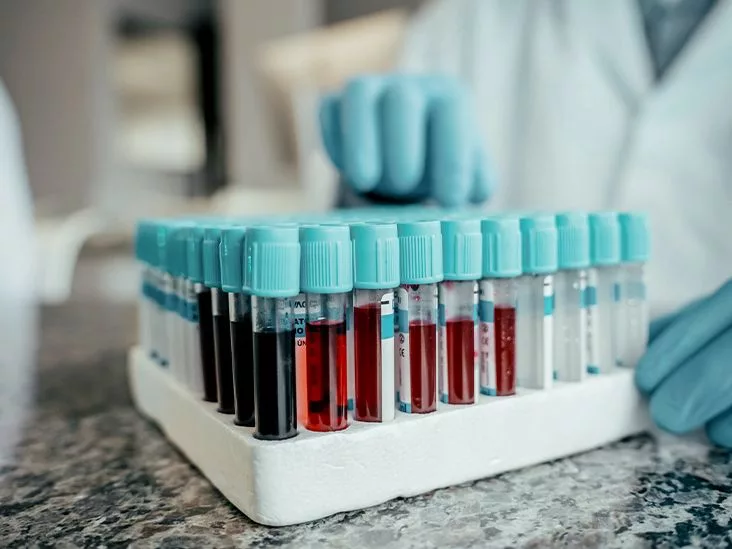Got a puzzling lab result that mentions “white blood cells”? You’re not alone. Many of us stare at a CBC (complete blood count) and wonder whether a number like 12,000 or 3,000 is “good” or “bad.” The truth is, white blood cells are the tiny warriors of your immune system, and understanding what they do can turn confusion into confidence. In the next few minutes we’ll demystify these cells, explore why their numbers rise or fall, and give you practical tips to keep them in a happy, healthy balance.
Quick Answers
What are white blood cells? They’re also called leukocytes, the specialized cells that patrol your bloodstream looking for invaders like bacteria, viruses, and rogue cells.
What is a normal white blood cell count? Generally between 4,500 and 11,000 cells per microliter (µL) of blood. Values outside this range flag something worth a closer look.
Why might my count be high? Infections, inflammation, stress, certain cancers, or even a recent workout can push the number up.
Why might my count be low? Viral illnesses, chemotherapy, autoimmune disorders, or bone‑marrow problems can suppress production.
Now that the basics are out of the way, let’s dig deeper—without the jargon.
What Are White Blood Cells
White blood cells (WBCs) make up roughly 1 % of your blood, yet they’re responsible for about 99 % of your body’s defensive actions. Think of them as the “security team” that’s always on guard. They’re born in the bone marrow, travel through your bloodstream, and sometimes take up residence in lymphatic tissue where they can quickly respond to trouble.
According to the University of Rochester Medical Center, leukocytes protect you against illness and disease. They’re constantly “at war,” ready to neutralize anything that looks foreign.
How They Work
When a pathogen (say, a cold virus) appears, white blood cells spring into action in a beautifully coordinated dance:
- Detection: Surveillance cells in the bloodstream recognize molecular patterns that don’t belong.
- Recruitment: Chemical signals (cytokines) call more leukocytes to the scene.
- Attack: Different cell types deploy specialized weapons—phagocytosis, antibody production, or releasing toxic granules.
- Cleanup: Once the invader is gone, most cells die off or become memory cells that remember the enemy for future fights.
This process is why you might feel feverish or achy; it’s your body’s “alarm system” revving up.
Types of White Blood Cells
There are five major families of leukocytes, each with a unique job. The table below breaks them down in plain language.
| Cell Type | Typical % of WBCs | Main Job | Quick Fact |
|---|---|---|---|
| Neutrophils | 60–70 % | First‑line defenders; gobble up bacteria and fungi | Live ~1 day; spikes dramatically during bacterial infections. |
| Lymphocytes | ≈30 % | Make antibodies; coordinate adaptive immunity | Include B‑cells and T‑cells; responsible for vaccine memory. |
| Monocytes | ~8 % | Long‑lived “cleanup crew”; become macrophages in tissues | Break down dead cells and debris; help wound healing. |
| Eosinophils | 1–3 % | Target parasites; moderate allergic responses | Release toxic proteins that can kill larger parasites. |
| Basophils | <1 % | Release histamine and heparin; trigger inflammation | Act as “alarm bells” during allergic reactions. |
All of these cell types were described in the same way across several reputable health sites, including Nationwide Children’s Hospital and UCI Health, confirming the consistency of the information.
Why Counts Change
Now that you know who the players are, let’s answer the burning question: why does the number of these warriors go up or down?
What Makes the Count Go Up?
- Acute infections: Bacterial infections often push neutrophils sky‑high, sometimes above 20,000 /µL.
- Physical stress or trauma: Surgery, burns, or even an intense workout can trigger a temporary leukocytosis.
- Inflammatory conditions: Autoimmune flare‑ups (like rheumatoid arthritis) increase certain leukocytes.
- Cancers of the blood: Leukemia or lymphoma can cause uncontrolled production of abnormal white cells.
- Medications: Steroids, for example, can artificially raise counts.
What Makes the Count Go Down?
- Viral infections: HIV, influenza, or severe COVID‑19 can suppress bone‑marrow activity.
- Chemotherapy or radiation: These life‑saving treatments unfortunately also kill dividing white cells.
- Autoimmune destruction: Conditions like systemic lupus erythematosus may target your own leukocytes.
- Bone‑marrow failure: Aplastic anemia or certain genetic disorders reduce production.
When a count is “dangerously” low, doctors look for signs such as fever, mouth sores, or unexplained bruising. According to a review by Dr John Cunha, DO, the threshold for concern is often below 2,000 cells/µL combined with symptoms of infection.
Real‑World Stories
Numbers become meaningful when you see how real people experience them. Here are three short snapshots that illustrate the spectrum.
Case 1: Post‑Flu Spike
Emma, a 28‑year‑old teacher, had a routine blood test after a stubborn flu. Her white blood cell count jumped to 15,000 /µL. “I was terrified,” she told her physician, “but the doctor explained that my neutrophils were just doing their job cleaning up the infection.” Within a week the count normalized, and Emma learned that a brief high count is often a sign of a healthy immune response.
Case 2: Chemotherapy‑Induced Low Count
Mark, undergoing treatment for lymphoma, watched his count dip to 1,800 /µL. He felt dizzy and chilly, so his oncology team prescribed a growth‑factor injection (G‑CSF) and strict “neutropenic precautions” (avoiding crowded places, meticulous hand‑washing). Two weeks later his count rose back above 3,500 /µL, and he felt relief mixed with renewed hope.
Case 3: Unexpected High Eosinophils
Lena, a 45‑year‑old garden enthusiast, noticed she was unusually itchy after a day of weed pulling. Her doctor ordered a CBC; the eosinophils were 8 % (well above the normal 1‑3 %). An allergist confirmed a mild pollen allergy. By reducing exposure and using an antihistamine, Lena’s eosinophil level settled, proving that not every “high” is dangerous—sometimes it’s just a clue.
Keeping Your White Blood Cells in Balance
While you can’t control every factor (like a sudden infection), lifestyle choices can tip the scales toward a robust, well‑regulated immune system.
Nutrition That Supports Leukocytes
- Vitamin C: Citrus fruits, bell peppers, and broccoli boost neutrophil function.
- Zinc: Found in pumpkin seeds, beans, and meat; essential for lymphocyte activity.
- Vitamin D: Sunlight and fortified dairy may help regulate immune responses.
- Omega‑3 fatty acids: Salmon, walnuts, and flaxseed have anti‑inflammatory properties.
Lifestyle Habits
- Regular, moderate exercise: Improves circulation, letting white cells patrol more efficiently.
- Adequate sleep: 7‑9 hours nightly lets your body produce and reset immune cells.
- Stress management: Chronic stress releases cortisol, which can suppress leukocyte production.
When to Call a Clinician
If you notice any of the following, it’s time to get a professional opinion:
- Fever > 100.4 °F (38 °C) lasting more than 48 hours.
- Persistent fatigue or unexplained weight loss.
- Frequent infections (more than 2 in a year).
- Unexplained bruising, bleeding, or night sweats.
- A recent CBC showing a white blood cell count outside the 4,500‑11,000 /µL range without an obvious cause.
Avoiding Missteps
Beware of “miracle” supplements that claim to “boost your white blood cells” without scientific backing. The CDC advises relying on evidence‑based nutrition and medical advice rather than unproven products.
Bottom Line
White blood cells may be tiny, but they’re mighty. A normal count tells you your immune system is cruising along; a high or low number is a signal—sometimes a harmless alarm, sometimes a warning bell. By eating well, staying active, sleeping enough, and knowing when to seek medical help, you give these guardians the best chance to protect you.
What’s your experience with white blood cell tests? Have you ever been surprised by a result? Share your story in the comments, ask any lingering questions, or simply give a 👍 if you found this guide helpful. Together we can turn lab numbers into confidence and keep our bodies thriving.


















Leave a Reply
You must be logged in to post a comment.